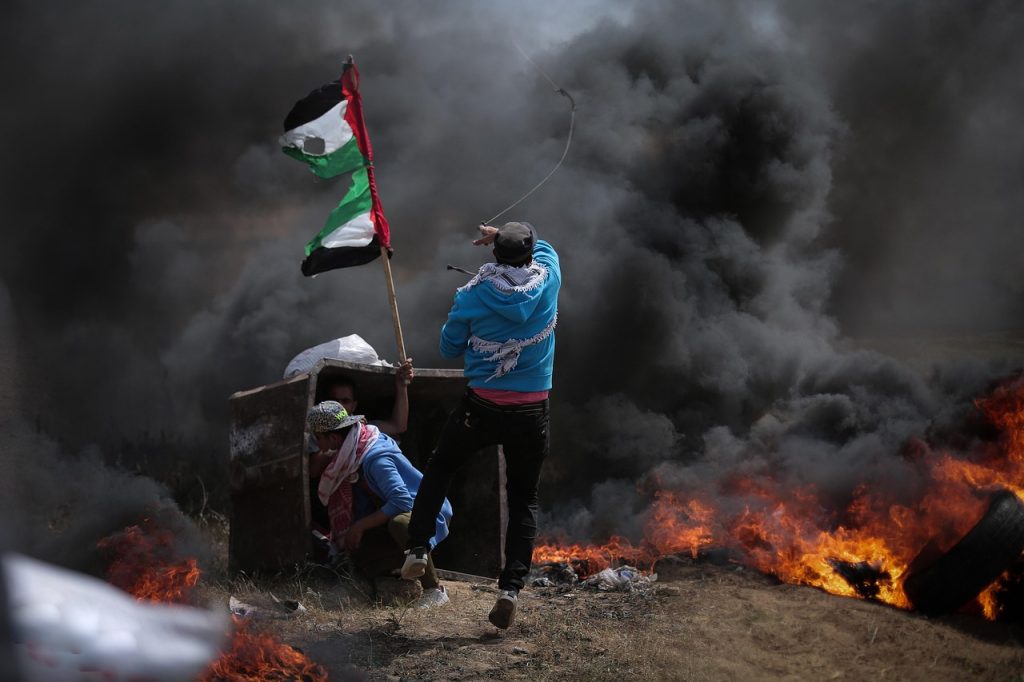Destruction and Suffering: The Humanitarian Reality in Gaza Today
A Landscape of Unending Ruin
Gaza, a territory on the Mediterranean coast, has come to represent suffering and despair on a global scale. More than two million of its residents are trapped in a bitter reality: living under unceasing conflict, destroyed infrastructure, and a long-standing blockade. The air they breathe is filled with the dust of rubble, while the streets they walk have turned into mass graves for buildings and all the memories within them. Beneath this, the wounds in the hearts of its people gape open, leaving deep scars that may never heal. Through this article, we will delve into the layers of the multi-dimensional crisis hitting Gaza. The goal is to uncover an urgent humanitarian reality that we can no longer ignore. Ultimately, the issue in Gaza is not merely about politics or armed conflict, but about the most fundamental right for every human being: the right to live safely and with dignity.

(Figure 1. Impact of Destruction)
The Layers of Crisis Gripping Life in Gaza
- Grief Under the Rubble of Gaza
Every escalation of conflict transforms Gaza into a landscape of destruction. Relentless airstrikes do not only level homes, but also schools, places of worship, and economic centers. Thousands of families are displaced from their homes, moving from place to place without knowing a truly safe destination. Many of them end up seeking shelter in UN schools or crowded, poorly-equipped tents. Daily narratives are filled with sorrowful tales, like a father digging through rubble with his bare hands to find his child, or a mother forced to make unimaginable choices amidst the panic. In this situation, the death toll, dominated by women and children, is no longer just a statistic, but tangible proof of a massive human tragedy. - A Collapsed Health System
Gaza’s health infrastructure, already weakened by a long-standing blockade, is now almost non-functional. Hospitals grapple with power outages, shortages of fuel for generators, and most critically, the depletion of stocks of essential medicines and medical supplies (WHO, 2024). Medical staff must work incessantly under horrific conditions, even having to perform surgeries with limited anesthesia and treating patients in crowded corridors. Tragically, these health facilities themselves often become targets of attack, eliminating the last refuge for the wounded (Human Rights Watch, 2023). Compounded by poor sanitation systems and overcrowding in shelters, disease outbreaks spread easily, adding to the already unbearable burden. - A Silent Threat: Starvation and the Clean Water Crisis
Behind the roar of explosions, an equally deadly silent threat is starvation and dehydration. The strict blockade cuts off access to supplies of food, fuel, and clean water. Consequently, the prices of basic necessities have skyrocketed and are unaffordable for the population (WFP, 2024). Many families are forced to survive on just one meal a day, and even that with minimal nutrition. Access to potable water has become a luxury. Damage to water pipelines and treatment plants forces people to consume contaminated water, leading to the spread of diseases like diarrhea, cholera, and skin infections (UNICEF, 2024). Experts liken this food and water crisis to a ticking time bomb that could potentially claim more lives than the violence of weapons (ERC, 2023). - A Future Wrenched from the Grasp of Children
Perhaps the most heart-wrenching is the plight of Gaza’s children. They have lost not only parents, homes, and a sense of security, but also their childhood and their future. School buildings are destroyed, learning has stopped, and the psychological trauma they experience is profound (Save the Children, 2024). Many of them suffer from severe post-traumatic stress disorder (PTSD), with symptoms such as nightmares, bedwetting, excessive anxiety, and a tendency to withdraw (Gaza Community Health Programme, 2023). They are growing up in an environment where violence is normalized, a bitter legacy that is difficult to break. In the end, this is a generation robbed of adequate education, devoid of hope, and raised in the shadows of death and destruction.

(Figure 2. Protest Amidst Smoke)
A Call for Humanity and a Restrained Hope
The situation in Gaza is poignant proof of how fragile humanity’s core is when armed conflict is chosen as the answer. In this wounded land, multiple crises are interlocked in a cycle of suffering: buildings destroyed, the health system collapsed, the threat of starvation widespread, and deep trauma in children becoming a nurtured legacy.Amid the despair, humanitarian aid arrives as a last flicker of hope. Local and international institutions continue to work on the front lines to distribute urgent aid, from food, clean water, and medicine to shelter. Unfortunately, these good intentions are often hampered by severely limited access and unpredictable security conditions. Therefore, the call for a sustainable ceasefire and unimpeded access for humanitarian aid is no longer an option, but an urgent necessity. The world must not remain a silent bystander. In conditions like these, every donation, every voice advocating for peace, and every push for a just solution is a tangible contribution to breaking the chain of suffering. Let us transform concern into a collective force to restore a glimmer of light for our brothers and sisters in Gaza. For, in the end, beyond all differences, it is only our shared humanity that can unite us all.
References
UNICEF. (2024). Water, Sanitation and Hygiene (WASH) Crisis in Gaza.
Gaza Community Health Programme. (2023). Rapid Mental Health Assessment Report.
ERC. (2023). Integrated Food Security Phase Classification (IPC) Report: Gaza Strip.
Human Rights Watch. (2023). Attacks on Health Care in the 2023 Gaza Conflict.
WHO. (2024). Health Resources Availability Monitoring System (HeRAMS) Report.
WFP. (2024). Food Security Monitoring Report: Gaza Strip.
Save the Children. (2024). Trauma and Children in Conflict: A Case Study of Gaza.

